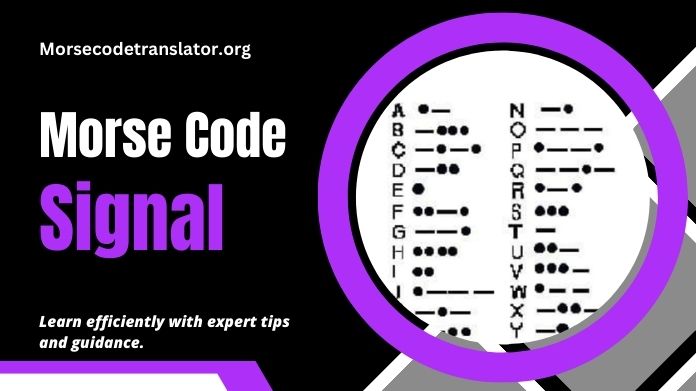With its rhythmic dots and dashes, the Morse code signal has long been a cornerstone of communication, offering a reliable means of transmitting messages over vast distances. Learning this timeless system opens up possibilities, allowing individuals to communicate effectively in various scenarios, from emergencies to amateur radio operations.
In this guide, we’ll explore the easiest way to learn the Morse code signal, breaking down its components and providing practical tips for mastering this essential skill.
Whether you’re a newcomer to Morse code or looking to refresh your knowledge, understanding the basics of its signals is the first step toward proficiency. With dedication and practice, anyone can become proficient in Morse code, unlocking the ability to send and receive messages using this classic form of communication.
Join us as we delve into the fundamentals of Morse code signals and discover how you can harness their power for effective communication in the modern world.
What is Morse Code Signal?

The Morse code signal is a method of transmitting textual information using a series of standardized sequences of short and long signals, typically represented as dots and dashes.
Each character in the Morse code alphabet corresponds to a unique combination of these signals. Developed by Samuel Morse and Alfred Vail in the early 19th century, the Morse code was initially used for telegraphy, allowing messages to be sent over long distances via telegraph wires.
The Morse code signal is versatile and can be transmitted using various methods, including sound, light, and radio waves. It has been widely employed in communication systems across domains, from maritime and aviation to amateur radio and military operations. Morse code remains relevant despite technological advances, particularly in emergencies where traditional communication channels may be compromised.
Learning the Morse code signal opens up opportunities for effective communication in diverse scenarios, making it a valuable skill for enthusiasts, hobbyists, and professionals alike. Whether used for recreational purposes or as part of essential training, mastering Morse code enhances one’s ability to transmit and receive information reliably in various contexts.
How to Learn the Morse Code Signal?
Learning the Morse code signal can be an exciting and rewarding experience, whether interested in amateur radio, emergency communication, or simply exploring a new skill.
Here’s a step-by-step guide to help you get started:
1. Understand the Basics: Familiarize yourself with the Morse code alphabet, which consists of combinations of dots and dashes representing each letter, number, and symbol.
2. Visualize and Memorize: Create flashcards or visual aids to help you memorize the Morse code symbols and their corresponding characters. Practice identifying them until you can recognize them instantly.
3. Practice Regularly: Dedicate time each day to practice Morse code. Start with simple exercises and gradually increase the complexity as you become more proficient.
4. Use Online Resources: Use resources such as Morse code learning websites, apps, and videos. These tools often include interactive lessons, quizzes, and games to reinforce your skills.
5. Listen and Repeat: Listen to recordings of Morse code signals and try to decode them. Mimic the rhythm and timing of the signals as you practice sending and receiving Morse code manually or using a keyed.
6. Join a Community: Connect with fellow Morse code enthusiasts through online forums, social media groups, or local amateur radio clubs. Sharing experiences and tips with others can enhance your learning journey.
7. Set Goals: Establish achievable goals for your Morse code proficiency, such as reaching a particular word per minute speed or successfully decoding a specific message.
8. Be Patient and Persistent: Learning Morse code takes time and patience. Don’t get discouraged by setbacks, and celebrate your progress.
By following these steps and staying committed to your practice, you’ll gradually develop fluency in Morse code and unlock its potential for communication and exploration.
Final Note
As technology continues to evolve, Morse code remains relevant as a reliable and robust method of communication, especially in situations where other forms of communication may fail.
Embracing the Morse code signal honors its historical significance and equips individuals with a timeless skill that transcends technological advancements.
By exploring the easiest ways to learn Morse code and leveraging modern tools and resources, enthusiasts can embark on an enriching journey toward proficiency in this timeless form of communication.
Whether through online courses, mobile apps, or traditional practice methods, the Morse code signal awaits those willing to embark on this rewarding learning experience.
